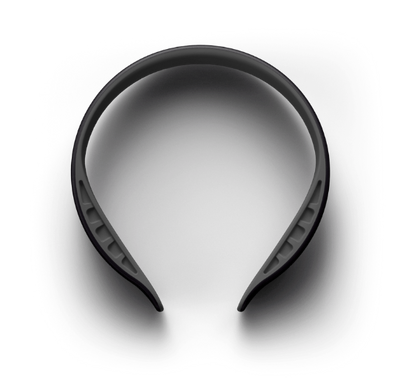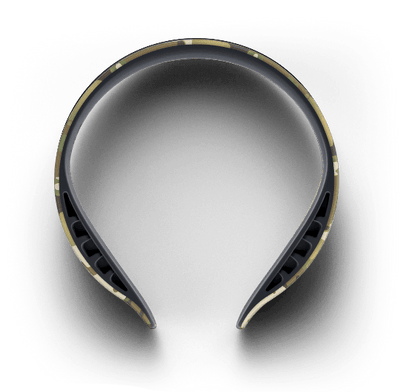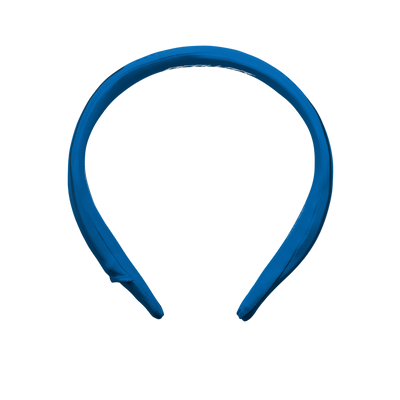Recent articles in The Washington Post and The British Medical Journal include several inaccuracies and mischaracterizations about the Q-Collar and the extensive body of research supporting it. We welcome thoughtful scrutiny of our science and product, but these pieces overlook key facts about how the Q-Collar was evaluated, cleared, and is being used safely by athletes today.
Q30 respects the power of nature to inspire innovation - from the Japanese Bullet Train to Velcro to the Q-Collar. Dr. David Smith was inspired to explore questions about brain safety by observing the world around him. Dr. Smith hypothesized that a collar that provides mild jugular vein compression could add brain stability and reduce brain impacts against inside the skull.
Q30’s first mission was to evaluate whether Dr. Smith’s theory could be proven with rigorous, independent scientific research. Over almost 10 years, experts at leading research institutions conducted independent pre-clinical and clinical studies, while Q30 worked with biomedical engineers to design the Q-Collar. While inspired by nature, the Collar’s safety and effectiveness were ultimately established through rigorous, p independent research in mammals and humans, making any criticism of its early inspiration irrelevant.
The Q-Collar is the only device of its kind to receive authorization by the FDA to help protect the brain from the effects of repetitive head impacts.
Nearly all research in this area is sponsored by the government, foundations or private parties. Q30 sponsored the research supporting its application to the FDA but had no role in the research design, selection of subjects, data collection, or the ability to otherwise edit, change or control the findings or published studies. Importantly, the researchers decided to use advanced imaging technology to “see” brain injury. This objective measurement is not subjective and cannot be influence by any placebo effect. Smoliga has questioned the use of such imaging instead of other tools to diagnose concussions. However, since there is no FDA-approved diagnostic test for concussions, concussions could not be used as the endpoint.
In February 2021, the FDA granted clearance, stating publicly that, the Q-Collar “provides an additional piece of protective equipment athletes can wear when playing sports to help protect their brains from the effects of repetitive head impacts while still wearing the personal protective equipment associated with the sport,” according Christopher M. Loftus, M.D., acting director of the Office of Neurological and Physical Medicine Devices in the FDA’s Center for Devices and Radiological Health.
Is the Statistical Criticism Valid? No. While Professor Smoliga seems to enjoy finding fault with a couple of tables that were erroneously included in published articles, he refuses to acknowledge that the authors of the articles corrected the tables more than a year ago. He also refuses to acknowledge that the conclusions reached in each study were unaffected by the mistakes. More importantly, this criticism overlooks the realities of the FDA review process. The FDA does not rely on published articles. Rather, the FDA performed its own analysis of the clinical study reports and the underlying data. To suggest that the FDA failed to do its job or relied on erroneous data is simply false.
Is the Clinical Criticism Valid? No, the FDA neurosurgeons, physiologists and biomedical engineers reached the same conclusions as our own medical advisors, which reflected a deeper and more comprehensive evaluation than that presented by outside critics. The FDA’s own file proves that the agency performed a thoughtful review of the evidence. As you would expect during the evaluation of a novel medical device, there was healthy debate within the agency before it reached its final decision. Critically, Q-Collar users face almost no risk and are provided likely benefit by increasing the brain’s stabilization inside the skull. This is not a controversial point. Concussions, brain injury and long-term damage is a complex conversation However we are confident in the additional protection the Q-Collar affords its wearers.
To further articulate this point, Dr. Wayne Olan, one of our advisors and a Neurosurgeon at GWU, gave this quote to The Washington Post, which they chose not to publish in full:
The term ‘concussion’ is confusing for everyone. There just isn’t a universal definition of a concussion. The DSM-5 does not define it, brain scans are not cleared by the FDA to diagnose it, and the working definitions vary among the NFL, CDC, AAN, and others. In human science we like to see uniformity of response to stimuli, and we don’t get that here. We use a list of common symptoms observed in patients after blow to the head, but each response is individual. I use brain scans every day to measure changes in the brain’s white matter. DTI is today behind the state of the art, but it’s not a weakness in research. DTI can show clear images of changes to the brain. The frustration in studying concussions, for lack of a better term, is the persistent inability in assigning those changes to clinical outcomes consistently across the board. There are too many unregulated claims out there about concussion prevention, but there’s no real science behind those claims. Those products are not to be evaluated in the same light as the Q-Collar which went through a formal process. If the brain scans of two football teams showed changes in white matter from the team without the collar and no, little or just less change in the team with the collar, I’d rather see players wearing the collar than not with no risk, discomfort, or significant acclimation.
Is Q30 ‘s Marketing “Over the Line?” No. The FDA has not approved any company to claim it can diagnose a concussion, let alone prevent one. The word “concussion” appears on our website once and only to state that the Q-Collar cannot prevent one. We welcome this scrutiny, because it reflects the seriousness with which we take athlete safety. Note that other equipment like helmet liners, helmet covers, balaclavas and soft head covers have no such clinical data and are not cleared or held accountable by the FDA to make any of their unverified claims. Efforts to equate these unregulated products with the Q-Collar are misleading and ignore the rigorous data supporting our device. Q30 is proud to offer the Q-Collar as the only device shown to help protect the brain from the effects of repetitive head impacts.
Are Users Complaining? No, only Professor Smoliga. In fact, scores of users note in reviews, post-purchase surveys and in live, customer service interactions that the Q-Collar came recommended to them by a medical professional who reviewed our research and came to the same conclusion that we did – the Q-Collar helps to better protect the brain during impacts. We also actively encourage athletes, parents, and healthcare professionals to discuss Q-Collar use together. Importantly, the research supporting FDA clearance and ongoing monitoring have continued to show no adverse events associated with using the Q-Collar.
There are no lawsuits, no complaints at the FTC, and no complaints or enforcement actions from the FDA Office of Inspections and Investigations. We will continue to market the Q-Collar as additional brain protection in the spirit of the FDA’s guidance.
Finally, we are disappointed by ongoing attempts to discredit the Q-Collar through mischaracterizations of its origins and misunderstandings of the underlying science. We remain confident in the rigor of the data, our transparent engagement with regulators, and the clear evidence that the Q-Collar can offer additional protection against the effects of repetitive head impacts. We will continue to advance the science in this field — including through collaboration with the Department of Defense, independent review, and continued dialogue — to help athletes and service members protect their brains for years to come.







